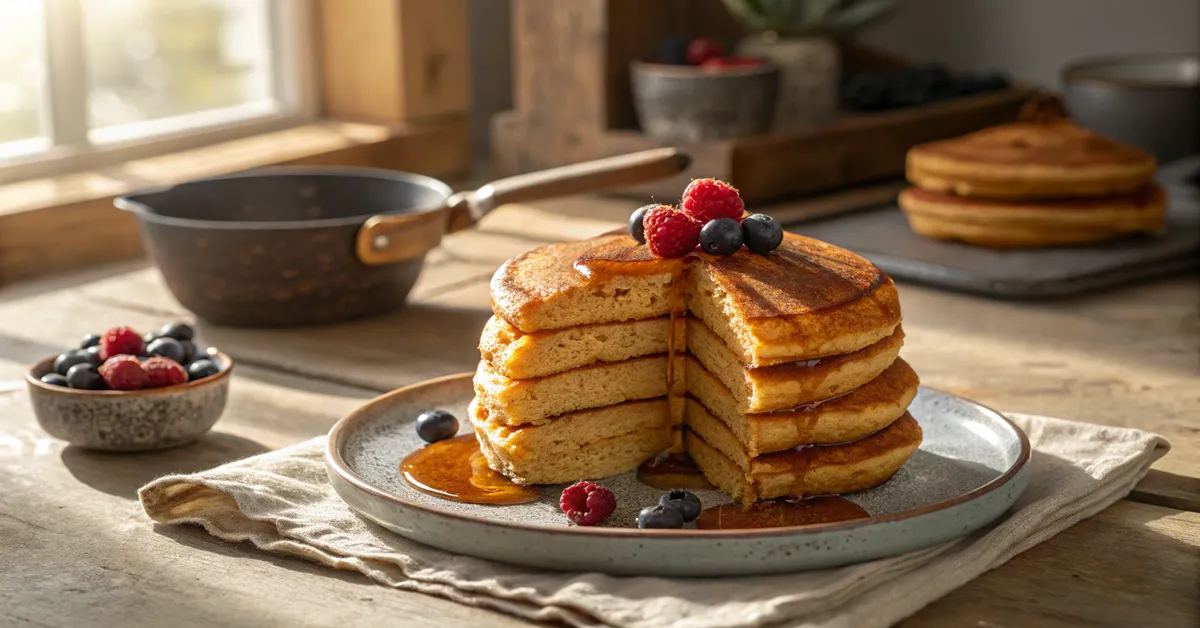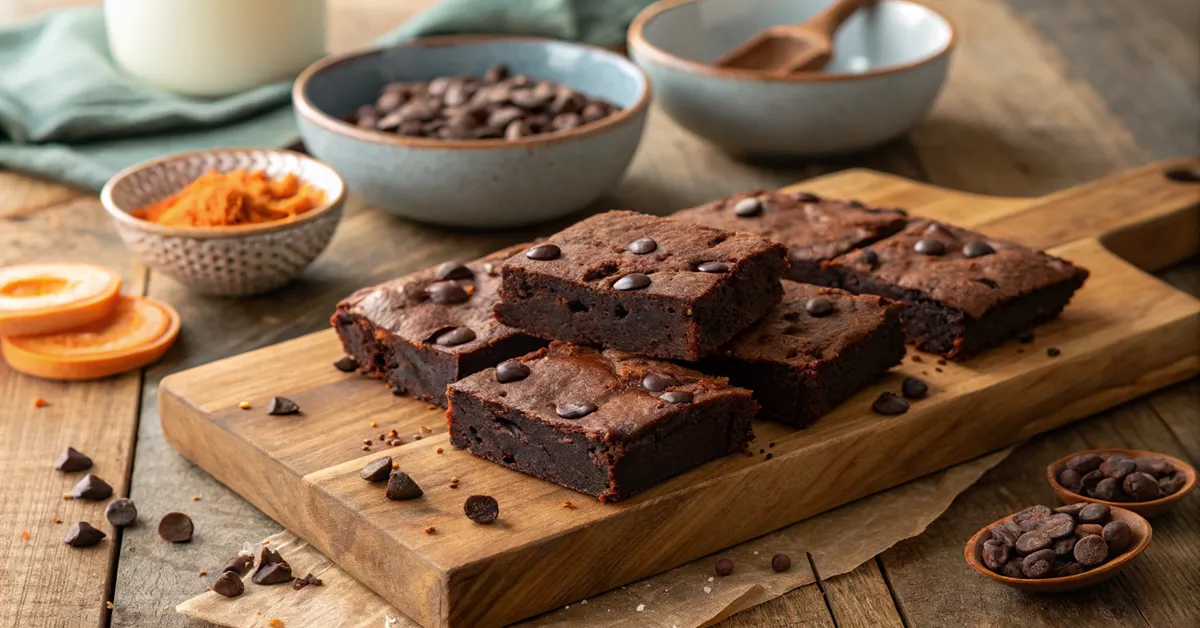Beef French Onion Soup Casserole – The Ultimate Comfort Dish
When Ines Zahraoui first stirred a pot in her small Tunisian kitchen, she never imagined her love for slow, soulful Mediterranean cooking would one day inspire home cooks across the world. Raised in Mahdia, a coastal town where onions caramelized slowly and stews simmered until flavors danced, Ines learned early on that food wasn’t just nourishment — it was memory, tradition, and love served on a plate.
One chilly evening in her kitchen outside Tunis, Ines’s French friend Sophie visited after a long day. Sophie, known for her love of hearty French classics, confessed how much she missed her grandmother’s beefy onion soup. Inspired by Sophie’s story and her own Franco-Mediterranean roots, Ines decided to craft a dish that married French comfort with Mediterranean heart — a Beef French Onion Soup Casserole.
It started as a playful experiment, layering tender beef with sweet caramelized onions, a rich stock kissed by a splash of wine, and finishing with a golden cheesy crust. The dish quickly became a family favorite, loved by her Moroccan husband and even the pickiest of their three children.
Today, Ines shares this recipe — a heartfelt fusion of tradition and creativity — with her growing community of home cooks worldwide. If you’ve ever longed for a dish that brings warmth to your table and stories to your heart, this Beef French Onion Soup Casserole might just be it.
Learn more about Ines’s Mediterranean journey here: Discover great ideas like this at The Mediterranean Recipe
Table of Contents
Table of Contents
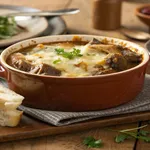
Beef French Onion Soup Casserole
- Total Time: 1 hour 20 minutes
- Yield: 6 servings
Description
This beef French onion soup casserole is a heartwarming blend of tender beef, sweet caramelized onions, crusty bread, and golden melted cheese — baked together for a comforting, savory dish inspired by classic French flavors and Mediterranean tradition.
Ingredients
Ingredients
- 1.5 to 2 pounds beef chuck roast or stew beef, cut into cubes
- 4 large yellow or sweet onions, thinly sliced
- 3 tablespoons olive oil
- 2 tablespoons balsamic vinegar or Worcestershire sauce
- 4 cups beef stock (preferably low sodium)
- 3 garlic cloves, minced
- 1 teaspoon dried thyme
- Salt and pepper, to taste
- 1 French baguette, sliced and toasted
- 2 cups shredded Gruyère or Swiss cheese
- Fresh parsley, chopped (for garnish)
Instructions
Step by Step Instructions
Heat olive oil in a large skillet over medium-low heat. Add sliced onions and cook slowly, stirring occasionally, for 30-40 minutes until deeply caramelized.
Stir in balsamic vinegar or Worcestershire sauce during the last 5 minutes of caramelizing. Set aside.
In a separate pan, sear beef cubes on high heat until browned on all sides. Season with thyme, salt, and pepper.
In a large casserole dish, layer the caramelized onions and seared beef evenly.
Pour beef stock over the layers.
Top with toasted baguette slices and sprinkle shredded cheese generously on top.
Bake in a preheated oven at 375°F (190°C) for 25-30 minutes until bubbly and golden.
- Garnish with fresh parsley before serving.
Notes
- Caramelize the onions slowly for the best depth of flavor.
- Toast the bread slices before adding to prevent sogginess.
- Leftovers taste even better the next day as flavors deepen.
- Store in the fridge for up to 3 days or freeze portions for later.
- Prep Time: 20 minutes
- Cook Time: 1 hour
- Category: Mediterranean Dinner Recipes
- Method: Baking
- Cuisine: Mediterranean,
Nutrition
- Serving Size: 1 serving (approx. 350g)
- Calories: 480 kcal
- Sugar: 7 g
- Sodium: 690 mg
- Fat: 27 g
- Saturated Fat: 12 g
- Unsaturated Fat: 14 g
- Trans Fat: 0.5 g
- Carbohydrates: 24 g
- Fiber: 2 g
- Protein: 35 g
- Cholesterol: 105 mg
Understanding Beef French Onion Soup Casserole
What is Beef French Onion Soup Casserole?
The Beef French Onion Soup Casserole is a creative twist on the classic French onion soup. Unlike the traditional broth-based dish, this casserole transforms those familiar flavors into a hearty, oven-baked meal layered with tender beef, sweet onions, rustic bread, and melty cheese. The result? A dish that feels like a cozy hug — comforting, rich, and perfect for family dinners.
Originally inspired by the flavors of French bistro cooking and Mediterranean slow-cooking traditions, this casserole highlights caramelized onions’ natural sweetness combined with the depth of slow-cooked beef. It’s a crowd-pleaser that blends rustic comfort with elegant flavors.
Explore another delightful variation of French Onion Soup Chicken and Rice
How Did This Dish Originate?
While French onion soup dates back to 18th-century France, often regarded as the food of peasants, its evolution into a casserole is a more recent culinary innovation. The idea likely grew out of the desire to create heartier meals suitable for sharing, combining soup’s rich broth with casserole’s family-friendly convenience.
Ines’s version was inspired by her multicultural kitchen, where French culinary techniques met Mediterranean ingredients. Her adaptation respects tradition while embracing new textures — turning a humble soup into a bake that’s as delicious for a weeknight meal as it is for a cozy Sunday gathering.
Looking for inspiration? Try our Couscous and Quinoa Salad for a colorful side dish: Discover great ideas like Couscous and Quinoa Salad
The Secret Ingredient in French Onion Soup and Its Impact on Beef French Onion Soup Casserole
What is the hidden ingredient in French Onion Soup?
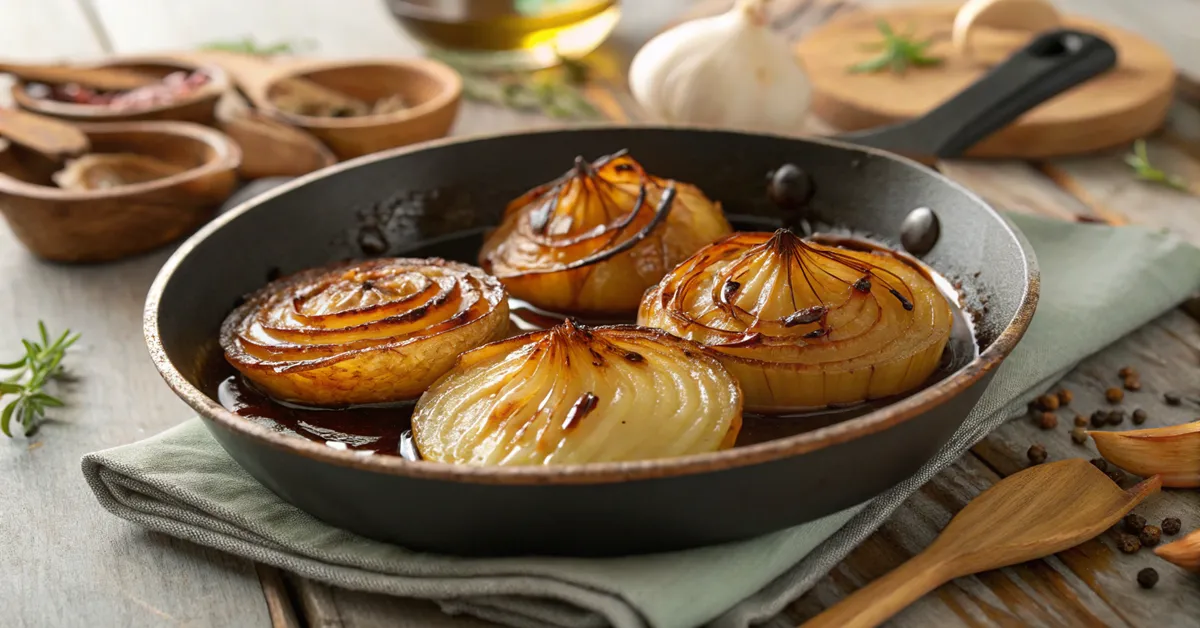
Every unforgettable beef French onion soup casserole begins with a harmonious blend of flavors rooted in the traditional French onion soup. While caramelized onions, savory beef, and gooey cheese are familiar components, there’s a less obvious yet impactful secret: a hint of acidity and umami derived from everyday pantry items..
Rather than using wine or spirits, many home cooks, like Ines, prefer a straightforward mix of balsamic vinegar or a dash of apple cider vinegar to enhance the sweet undertones of caramelized onions.. Adding a teaspoon of balsamic vinegar after caramelizing helps enhance the dish’s richness while balancing its sweetness. It brings out the deep flavors needed for a hearty beef French onion soup casserole without overpowering the beef or onions.
This natural acidity works much like traditional wine would but keeps the dish wholesome and family-friendly. It’s a simple tweak that makes your beef French onion soup casserole shine with authentic, layered flavors.
Discover Mediterranean comfort food with bold flavors: Learn more about our Mediterranean Shrimp Bowl
How This Ingredient Enhances the Flavor of Beef French Onion Soup Casserole
In a well-crafted beef French onion soup casserole, acidity is the balancing act that ties everything together. When you add a dash of balsamic or apple cider vinegar after caramelizing the onions, it naturally lifts the flavors, giving your casserole that signature savory depth.
This method draws out the umami richness from the beef and helps blend the sweetness of the onions with the robustness of the broth. It also helps capture all the browned bits from the pan — locking in the essence of a truly satisfying beef French onion soup casserole.
Ines’s tip for a perfect beef French onion soup casserole is simple: use pantry staples like balsamic vinegar or even a squeeze of fresh lemon juice to add brightness and complexity to your dish without any need for alcohol-based ingredients.
Don’t miss out on Mediterranean classics: Discover great ideas like Moroccan Fish in 4 Simple Steps
Choosing the Right Beef for Beef French Onion Soup Casserole
Best Cuts of Beef for a Rich, Tender Beef French Onion Soup Casserole
Choosing the right cut of beef is the first key step toward a perfect beef French onion soup casserole. Ines always emphasizes using well-marbled cuts that deliver tender, juicy bites in every spoonful of this hearty dish.
For a traditional and flavorful beef French onion soup casserole, chuck roast stands out as the top choice. Its rich marbling and natural beefy flavor make it ideal for slow cooking and baking. Another excellent option is beef brisket, known for its hearty texture that perfectly complements the softness of caramelized onions and melted cheese.
If you’re short on time but still want a satisfying beef French onion soup casserole, opt for stewing beef cubes or thinly sliced sirloin. Just be sure to brown them well to develop the deep, rich flavors that set this dish apart.
Discover more Mediterranean comfort food: Looking for inspiration? Try our 10 Gluten-Free Mediterranean Recipes
Why Beef Stock vs. Beef Broth is important in Beef French Onion Soup Casserole
A frequently neglected factor in creating a delectable beef French onion soup casserole is the decision between using beef stock and beef broth. While they may appear alike, they serve distinct functions in shaping the flavor profile of your casserole.
Beef stock, made by simmering bones, gives a gelatin-rich, hearty base — perfect for a dense, savory beef French onion soup casserole that holds its own on the dinner table. It provides a hearty consistency and amplifies the savory beef flavor in the casserole. Conversely, beef broth is more delicate, typically simmered with meat and vegetables, providing a fragrant and nuanced taste. It suits a beef French onion soup casserole where you want the sweetness of caramelized onions to shine without being overwhelmed by richness.
Ines enjoys combining both beef stock and broth in her signature beef French onion soup casserole, achieving an ideal harmony of rich depth and subtle flavor. This technique gives her casserole a rich backbone while letting the onions and cheese take center stage.
Check out another homestyle favorite: Don’t miss our Loaded Veggie Omelette – 5 Fun Facts
The Classic French Onion Soup Foundation for the Beef French Onion Soup Casserole
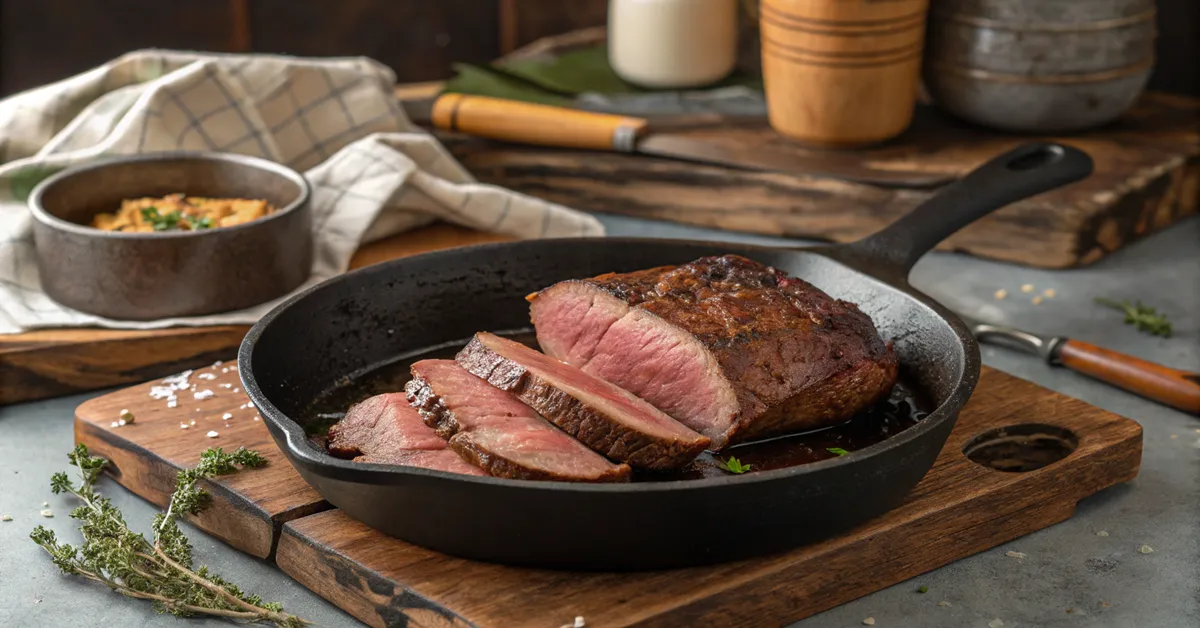
What is the Key Ingredient in a Classic French Onion Soup?
At the heart of every beef French onion soup casserole is one iconic ingredient — caramelized onions. This unassuming ingredient elevates an ordinary dish into a sumptuous, flavorful creation. Caramelizing onions slowly unlocks their natural sweetness, deep flavor, and signature golden color, making them the backbone of both French onion soup and any hearty beef French onion soup casserole.
Ines, known for her slow-cooked Mediterranean approach, believes caramelized onions are not just an ingredient but a process. Cooking onions low and slow in olive oil or butter over medium-low heat allows their sugars to break down naturally. The result? Sweet, melt-in-your-mouth onions that bring layers of flavor to your beef French onion soup casserole.
This patience-driven method sets apart a truly savory beef French onion soup casserole from an average dish, delivering that unmistakable depth you crave in comfort food.
Don’t miss out on another layered dish: Check out our Couscous and Quinoa Salad
Caramelizing Onions to Perfection for the Casserole Base
Perfecting caramelized onions is the key to achieving the rich flavor in your beef French onion soup casserole. It’s tempting to rush this step, but slow cooking over low heat allows the onions to soften, release moisture, and develop a natural sweetness essential to the dish.
Here’s Ines’s step-by-step caramelization method for the ideal beef French onion soup casserole base:
- Start with yellow or sweet onions, sliced thin. These varieties provide the right balance of sugar and savory notes for your beef French onion soup casserole.
- Sauté in olive oil on medium-low heat for approximately 30 to 40 minutes, stirring frequently, until the mixture is golden brown and has a jam-like consistency.
- Once the onions are caramelized, incorporate a dash of balsamic vinegar or apple cider vinegar. This enhances both the sweetness and depth in your beef French onion soup casserole.
- Season with a pinch of sea salt to bring out their natural flavor before layering them into your beef French onion soup casserole.
This meticulous preparation guarantees that each spoonful of your beef French onion soup casserole offers an ideal blend of savory, sweet, and comforting flavors.Looking for a light side dish idea? Check out our Couscous and Quinoa Salad
The French Tradition Behind Onion Soup and Its Casserole Evolution
Why Do French People Eat Onion Soup?
The story of beef French onion soup casserole begins with the long-standing tradition of French onion soup itself — a dish deeply woven into French culinary history. French onion soup has been a staple of French homes and bistros for centuries, prized for its rich flavor, affordable ingredients, and heartwarming nature.
French onion soup, much like the modern beef French onion soup casserole, was originally considered a humble meal, made from slow-cooked onions, broth, and stale bread. In France, onions were often the food of the working class, affordable yet packed with flavor. When simmered slowly, they transformed into something luxurious — a true comfort dish that inspired the creation of the beef French onion soup casserole we love today.
Ines, fascinated by culinary traditions, often tells how onion soup became a symbol of warmth and resilience in French culture. It wasn’t just about feeding a family — it was about nourishing the soul. This philosophy is the same spirit behind the beef French onion soup casserole, bringing tradition to modern family kitchens in a hearty, satisfying way.
Discover how tradition meets creativity: Don’t miss our Mediterranean Shrimp Bowl
How French Culinary Tradition Inspired the Beef French Onion Soup Casserole
The transition from soup to casserole happened naturally in kitchens where comfort food met practicality. The beef French onion soup casserole is an evolution of this beloved classic — taking everything people love about the soup and turning it into a filling, shareable dish.
Ines’s take on the beef French onion soup casserole keeps the heart of French onion soup alive: the caramelized onions, hearty beef, rich broth, and golden cheese topping. By baking these elements together, the flavors meld beautifully, creating a dish that’s even more comforting than the original soup.
This casserole version reflects the Mediterranean approach to food — simple, wholesome ingredients treated with care. The beef French onion soup casserole isn’t just a recipe; it’s a connection between French tradition, Mediterranean flavors, and modern family meals.
Looking for more wholesome ideas? Check out our Couscous and Quinoa Salad
Vermouth Substitutes in Beef French Onion Soup Casserole
What is a Substitute for Vermouth in French Onion Soup Casserole?
Traditional French onion soup recipes often call for vermouth or wine, but when making a wholesome beef French onion soup casserole, you don’t need alcohol to achieve bold, balanced flavors. Ines, known for her family-friendly Mediterranean recipes, loves using natural pantry alternatives that keep the dish flavorful and inviting.
One of the best substitutes for vermouth in beef French onion soup casserole is a splash of balsamic vinegar or apple cider vinegar. These ingredients mimic the slight acidity vermouth would bring while enhancing the depth of the caramelized onions. Another favorite is a small amount of Worcestershire sauce, which adds umami richness that pairs perfectly with beef.
If you want a bright yet mellow flavor in your beef French onion soup casserole, a tablespoon of fresh lemon juice works beautifully. It lifts the dish without overpowering the sweet onions and savory beef. These alcohol-free choices give your casserole layers of flavor without compromising taste.
Discover more Mediterranean home-style cooking: Learn more about our 10 Gluten-Free Mediterranean Recipes
Alcohol-Free and Flavorful Alternatives for the Casserole
When Ines prepares her beef French onion soup casserole, she often relies on a mix of bold, simple flavors to replace any traditional alcohol-based ingredients. Here are her top alcohol-free picks:
- Balsamic Vinegar — Adds sweetness and a gentle tang that deepens the flavors of the beef and onions in the casserole.
- Worcestershire Sauce — Provides a complex umami note perfect for a savory beef French onion soup casserole.
- Apple Cider Vinegar — Offers brightness and a hint of fruity acidity without overpowering the dish.
- Fresh Lemon Juice — A light, fresh alternative that balances the richness of the beef and cheese in the beef French onion soup casserole.
These simple pantry staples work together to make your beef French onion soup casserole full of bold, comforting flavors — no vermouth needed.
Looking for other flavor-packed ideas? Don’t miss our Loaded Veggie Omelette – 5 Fun Facts
Making Beef French Onion Soup Casserole at Home — Step by Step Guide
Ingredients You Need for the Perfect Beef French Onion Soup Casserole
Creating a mouthwatering beef French onion soup casserole starts with the right mix of simple, wholesome ingredients. Ines, who crafts every recipe with love and tradition, always emphasizes quality over quantity. Here’s a complete list of ingredients for a traditional homemade beef French onion soup casserole:
| Ingredient | Quantity | Purpose |
| Beef chuck roast or stew beef | 1.5 to 2 pounds, cubed | Delivers rich, tender meat for the beef French onion soup casserole |
| Yellow or sweet onions | 4 large, thinly sliced | Forms the caramelized onion base |
| Olive oil | 3 tablespoons | For slow-cooking the onions |
| Balsamic vinegar or Worcestershire sauce | 2 tablespoons | Adds depth and balances sweetness |
| Beef stock | 4 cups | The deep, flavorful base of the beef French onion soup casserole. |
| Garlic cloves | 3, minced | Enhances the flavor profile |
| Dried thyme | 1 teaspoon | Adds herbal warmth |
| Salt and pepper | To taste | Essential seasoning |
| French bread or baguette | 1 loaf, sliced and toasted | Traditional topping for the casserole |
| Gruyère or Swiss cheese | 2 cups, shredded | Forms the gooey, golden layer atop the beef French onion soup casserole |
| Fresh parsley | For garnish | Adds color and freshness |
These ingredients come together to create a beef French onion soup casserole that’s deeply savory, heartwarming, and perfect for sharing with family and friends.
Looking for more cozy family recipes? Check out our Mediterranean Shrimp Bowl
Step-by-Step Instructions for Cooking the Dish
Follow this simple yet flavorful process for making the perfect beef French onion soup casserole right at home:
- Caramelize the Onions:
- Warm olive oil in a spacious skillet over medium-low heat.
- Add the sliced onions and cook slowly, stirring occasionally, for 30-40 minutes until golden brown and caramelized.
- Stir in balsamic vinegar or Worcestershire sauce during the last 5 minutes to enhance the flavor.
- Warm olive oil in a spacious skillet over medium-low heat.
- Brown the Beef:
- In a separate pan, sear the beef cubes on high heat until browned on all sides.
- Season with salt, pepper, and a sprinkle of thyme.
- Remove from heat and set aside.
- In a separate pan, sear the beef cubes on high heat until browned on all sides.
- Build the Casserole Base:
- In a large casserole dish, layer the caramelized onions and browned beef.
- Pour in the beef stock and mix gently to combine flavors.
- In a large casserole dish, layer the caramelized onions and browned beef.
- Top with Bread and Cheese:
- Layer toasted French bread slices on top of the beef and onion blend.
- Liberally add shredded Gruyère or Swiss cheese on top to achieve that iconic cheesy crust.
- Layer toasted French bread slices on top of the beef and onion blend.
- Bake:
- Preheat oven to 375°F (190°C).
- Bake uncovered for 25-30 minutes until the cheese is melted, bubbly, and golden brown.
- Preheat oven to 375°F (190°C).
- Garnish and Serve:
- Let the beef French onion soup casserole rest for a few minutes.
- Garnish with freshly chopped parsley and serve hot.
- Let the beef French onion soup casserole rest for a few minutes.
This method ensures that every layer of your beef French onion soup casserole bursts with flavor — from the savory beef to the rich onions and the melty cheese topping.
Discover more comfort food favorites: Learn more about our Loaded Veggie Omelette – 5 Fun Facts
Serving, Storing, and Pairing Ideas for Beef French Onion Soup Casserole
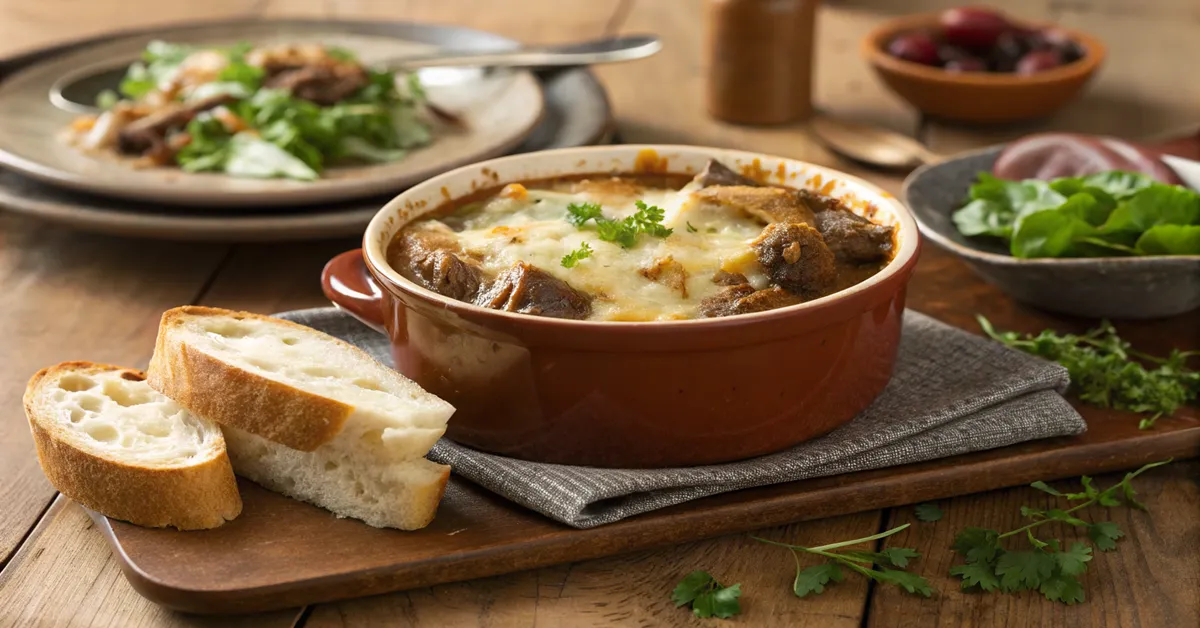
Best Side Dishes to Serve with Beef French Onion Soup Casserole
A hearty beef French onion soup casserole shines as the centerpiece of any meal, but pairing it with the right sides makes the experience even better. Ines, a master of Mediterranean-inspired comfort food, recommends keeping sides simple, fresh, and balanced to complement the rich flavors of the casserole.
Here are her favorite pairings for a complete beef French onion soup casserole dinner:
- Fresh Green Salad:
A crisp green salad with mixed lettuce, arugula, cherry tomatoes, and a light lemon-olive oil vinaigrette cuts through the richness of the beef French onion soup casserole beautifully. - Roasted Vegetables:
Oven-roasted carrots, zucchini, and bell peppers seasoned with herbs de Provence make a colorful, healthy addition. Their natural sweetness pairs perfectly with the savory casserole. - Steamed Asparagus or Broccoli:
Lightly steamed green vegetables offer a simple, nutritious side that won’t compete with the flavors of the beef French onion soup casserole. - Garlic Bread or Herb Focaccia:
If you love bread with your casserole, garlic bread or a slice of herb focaccia is a wonderful choice for dipping into the rich, beefy sauce of your beef French onion soup casserole.
Don’t miss our colorful side dish ideas: Check out our Couscous and Quinoa Salad
How to Store and Reheat the Casserole for Best Flavor
The beauty of a beef French onion soup casserole is that it tastes even better the next day as the flavors deepen and meld together. Ines suggests preparing a bit more, as having leftovers is a wonderful bonus.
Storage Tips for Beef French Onion Soup Casserole:
- Refrigerate:
Let the beef French onion soup casserole cool thoroughly before placing it in storage. Store it in a sealed container and keep it in the refrigerator for up to three days. - Freeze:
You can freeze servings of the beef French onion soup casserole in sealed containers for up to two months. Thaw overnight in the fridge before reheating.
Reheating Tips for Beef French Onion Soup Casserole:
- Oven Method (Best):
Preheat oven to 350°F (175°C). Seal the casserole with foil and bake for 20-25 minutes until warmed through. Take off the foil during the last 5 minutes to crisp up the cheese topping. - Microwave Method (Quick):
Heat individual portions in the microwave for 2-3 minutes, checking halfway. Though convenient, this method may soften the bread topping.
Proper storage and reheating ensure that your beef French onion soup casserole remains delicious, hearty, and perfect for any meal.
Explore more family-friendly dishes: Don’t miss our Mediterranean Shrimp Bowl
FAQ Section — Everything You Need to Know About Beef French Onion Soup Casserole
What is the secret ingredient in French onion soup?
The secret ingredient that brings depth to classic French onion soup — and by extension, the beef French onion soup casserole — is slow-caramelized onions enhanced with a touch of balsamic vinegar. This simple pantry staple deepens the natural sweetness of the onions and gives the dish its signature savory flavor without overpowering the beef. In a well-made beef French onion soup casserole, this step is non-negotiable for unlocking rich, layered flavors.
Is beef stock or broth better for French onion soup?
For a bold and hearty beef French onion soup casserole, beef stock is the better choice. Stock is made by simmering bones and connective tissues, creating a gelatin-rich liquid that adds body and depth to your casserole. While beef broth works for a lighter taste, stock brings the robust flavor that complements the sweet onions and savory meat in every bite of the beef French onion soup casserole.
What is the key ingredient in a classic French onion soup?
The key ingredient in both French onion soup and beef French onion soup casserole is, without a doubt, caramelized onions. Taking the time to slowly cook the onions until they reach a deep golden color transforms their flavor, making them sweet, savory, and utterly irresistible. Ines never skips this step, knowing it’s the foundation of every flavorful beef French onion soup casserole.
What alcohol is used in French onion soup?
While traditional French onion soup may include wine or vermouth, the beef French onion soup casserole in this recipe uses non-alcoholic alternatives like balsamic vinegar, apple cider vinegar, or Worcestershire sauce. These ingredients offer the acidity and depth often provided by wine, but in a wholesome, family-friendly way that enhances the casserole’s rich flavors without adding alcohol.
What is a substitute for vermouth in French onion soup?
If you’re making a beef French onion soup casserole and want to skip vermouth, the best substitutes are balsamic vinegar, apple cider vinegar, or a splash of Worcestershire sauce. These pantry staples add the acidity and savory depth your casserole needs, keeping it flavorful and delicious without any alcohol. Ines often uses these ingredients to balance the caramelized onions and hearty beef in her signature beef French onion soup casserole.
Why do French people eat onion soup?
French onion soup — the inspiration behind the beef French onion soup casserole — has deep cultural roots in France. Traditionally considered a dish for the working class, it was loved for its simplicity, affordability, and comforting flavors. Over time, it became a beloved staple in French cuisine, symbolizing warmth, family, and tradition. The beef French onion soup casserole carries on this legacy, offering a heartwarming, satisfying dish perfect for modern family tables.
Ines’s journey with the beef French onion soup casserole isn’t just about crafting a delicious dish — it’s about honoring tradition, family, and the joy of sharing food. From her cozy kitchen in Tunisia to your dining table, this casserole brings together the rustic flavors of caramelized onions, hearty beef, and the comforting melt of cheese, all in a single, unforgettable meal.
Whether you’re looking for a crowd-pleasing dish for family dinners or a cozy recipe for a chilly night, the beef French onion soup casserole stands out as a comforting, nourishing option that captures the heart of both French and Mediterranean cooking.
Don’t miss more Mediterranean inspirations: Learn more about Ines’s story on our About Page


